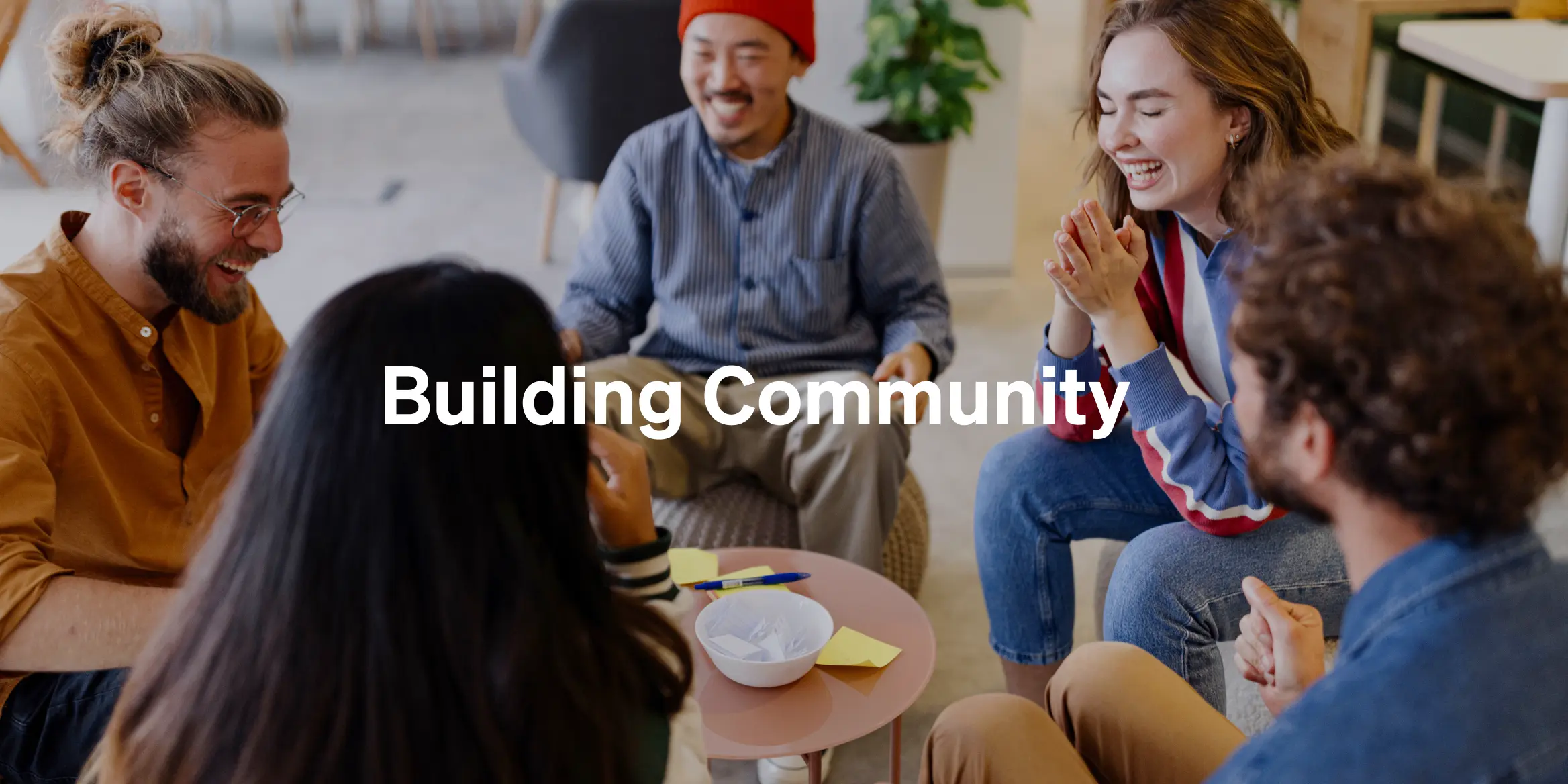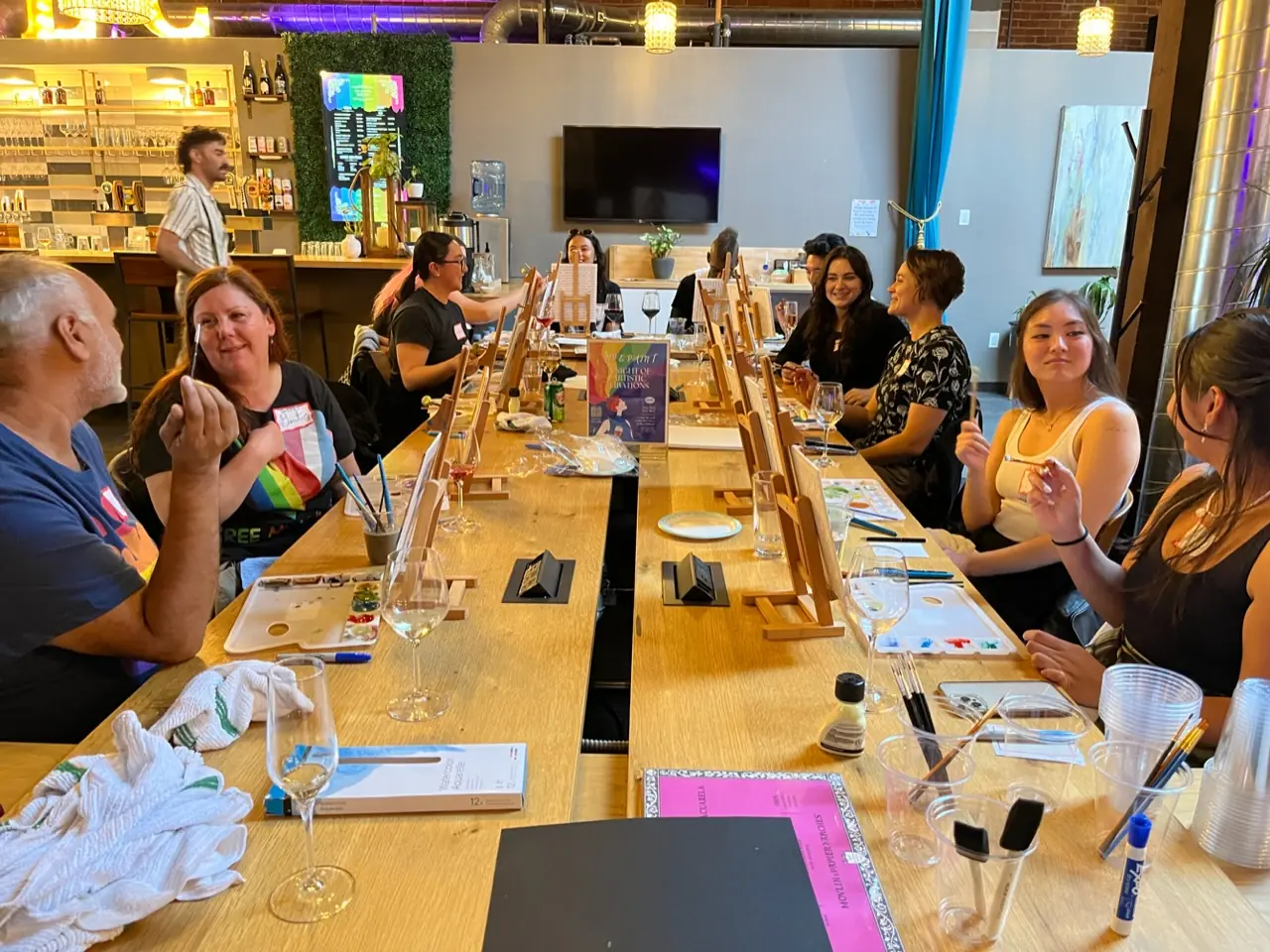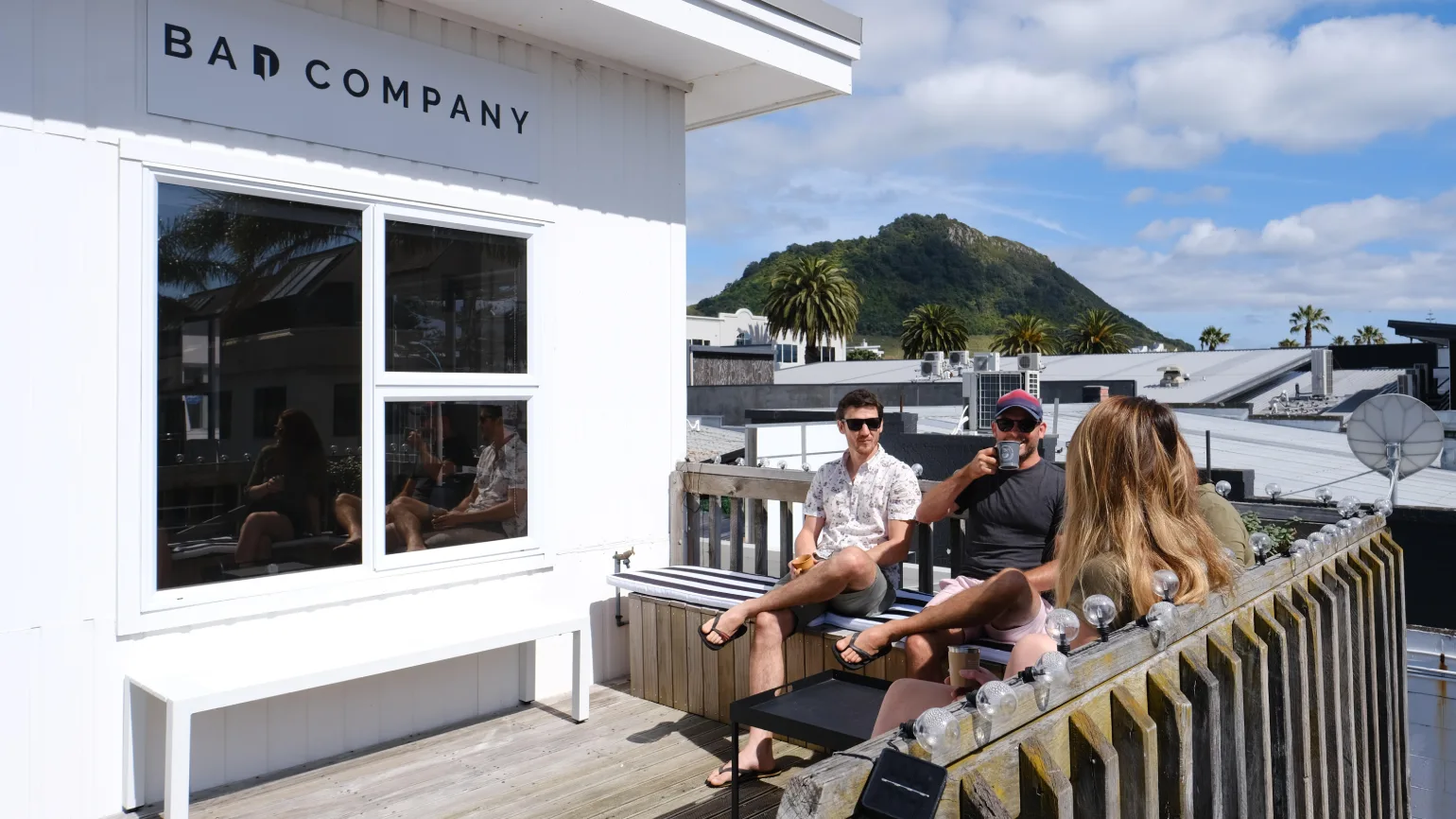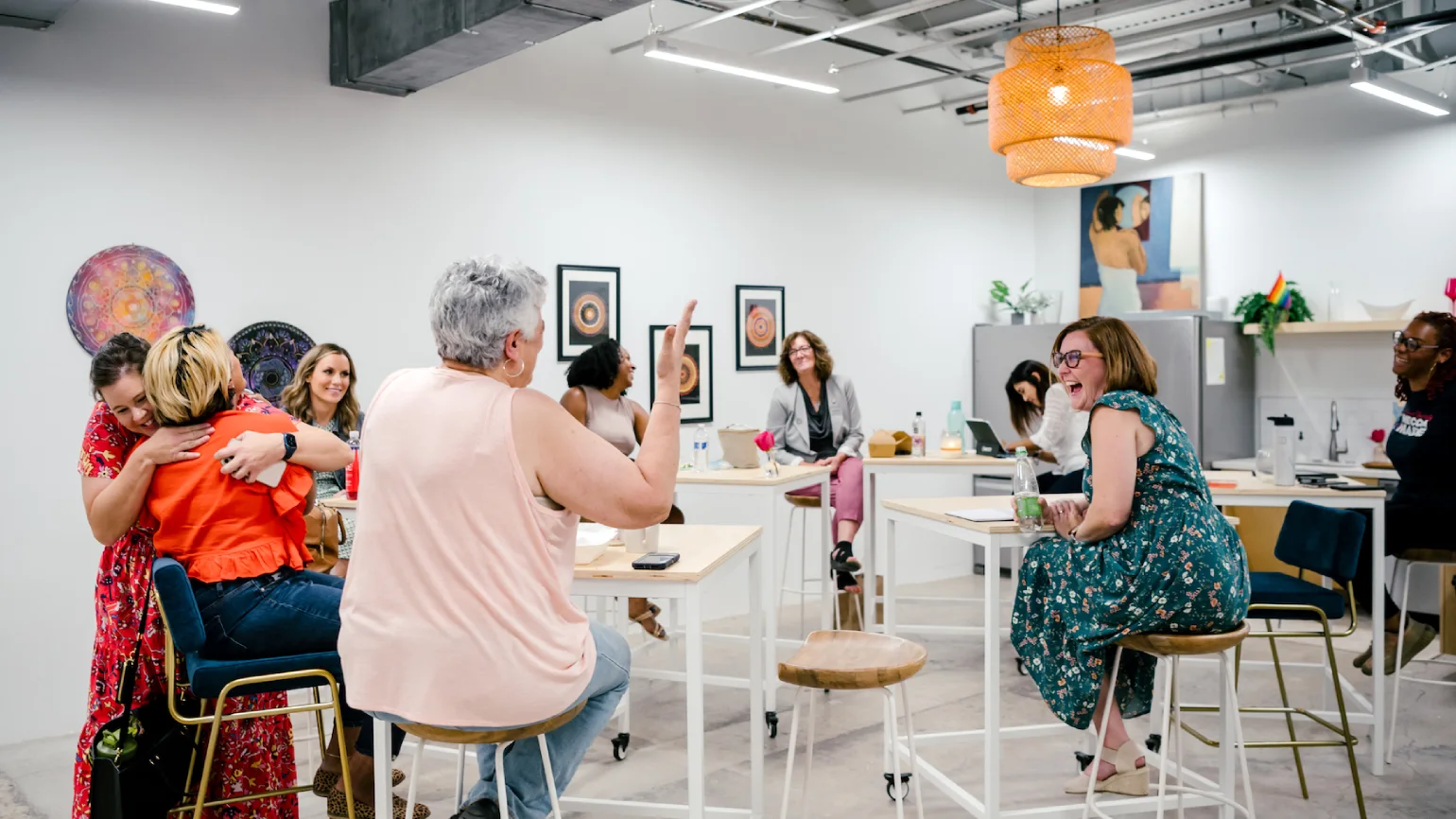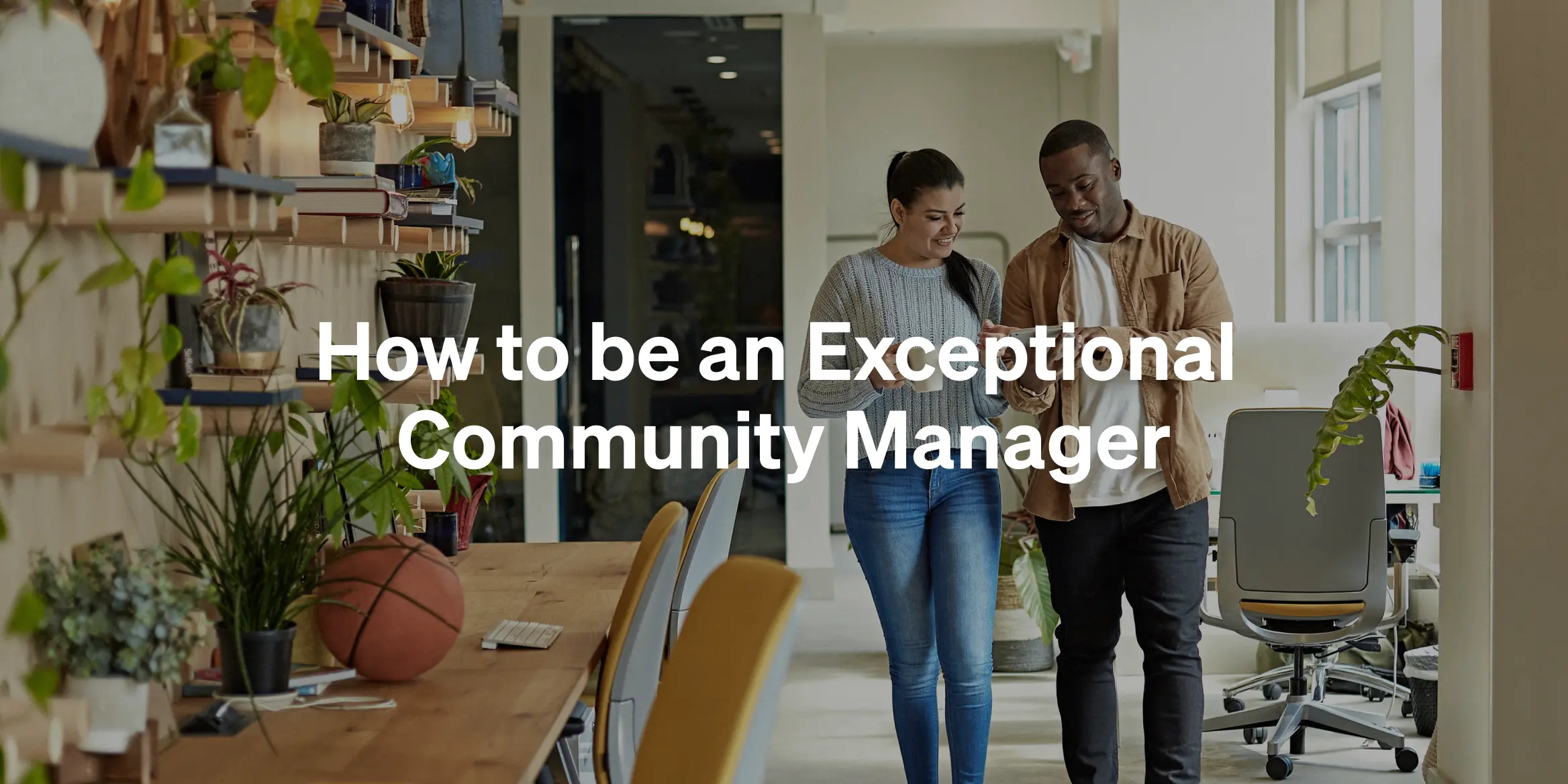At the heart of every successful coworking space is an empowered community driving it forward.
How you begin to cultivate that community is an art and a science that new coworking owners and operators are eager to understand.
We asked nine experienced coworking leaders for their best piece of advice for building an engaged community. Their insights can help shed light on how emerging operators can begin to do the same in their own space, no matter the circumstances.
Read on to hear exactly how to build a coworking community from operators who have successfully done it themselves!
1. Cultivate community before you open
One piece of advice that came up from more than one seasoned coworking pro is the importance of building a coworking community before you open your doors.
Mark Eaton, CEO & Founder at The Corner Coworking in Cochrane Alberta, was able to create a “pre-built” community which helped ensure the success of the space despite their rural location.
“Awareness of coworking and shared workspaces is not always as high in rural locations as in bigger cities, so building community must start early, ideally before opening a new coworking space. A cost-effective way to start community building is to hold regular networking events… coworking, without a coworking space!”
“Before we launched The Corner Coworking, we ran weekly networking/coworking meetups in local cafes. This gave us a couple of opportunities… firstly, we could build a coworking community before we had a physical space; secondly, it allowed us to validate the viability of a coworking space.”
Mark continues. “Once the community had enough strength and momentum, they wanted to work together more often and pushed us to find and open a coworking space; we then knew we were ready. Once we launched, we had a ‘prebuilt’ community, and this helped us when we toured prospective members as the space was being used.”
Steve Krueger, CEO & Founder at ECOMsquare, also built a community before opening his physical space.
He started a community group in 2014, nearly six years before opening ECOMsquare, as a way of bringing together individuals in the e-commerce industry in Vancouver, BC. Their first event had over 120 attendees. They went on to hold meet-ups across North America before realizing they needed a place to centralize their community. You can read his full story on our website.
“One of the biggest challenges for people when we held meet-ups was just being in general proximity to a lot of different business owners in the same vertical or similar industry. A lot of them were working from home so they didn't really have that community. It made us realize we should build a physical space to have a place where all these people can commune, talk about these ideas, and brush shoulders.”
Having a group of people who are interested in joining your community before your space opens is a surefire way to long-term success. Learn how to build a digital coworking community before you open your doors with Optix.
2. Focus on your passion
Fostering connection amongst your members often comes back to identifying and rallying around shared interests and passions.
Rebecca Brian Pan, Co-founder at Trellis Coworking, says operators should focus on what they are personally passionate about to drive engagement in the community.
“My best piece of advice is for each community builder to focus on what he/she/they is personally passionate about. That passion is the secret sauce for true community engagement.”
Rebecca goes on to give a few examples. “A team member of mine loved running and music. I encouraged her to start a running team of members. This grew into a trip to Mendocino for a race, a weekend at a winery together, cooking and running and drinking and a whole lot of human connection.”
“I started a trampoline dodgeball team because, well, how fun is that? We did sip-and-paints together and community art projects when I had more creative folks on the team. We started a band. The list goes on, but it all comes down to what people love and want to share.”
By focusing on what you’re passionate about, you can create an authentic connection amongst members – and have fun in the process.
3. Provide an exceptional experience
For community to blossom, members need to want to keep coming back. This comes down to providing an exceptional experience for everyone who walks through the doors.
Karen Tait, Founder & CEO at The Residence Coworking, wants everyone to feel how special The Residence is, no matter their membership status. “You only get one chance to make a great first impression,” says Karen.
“I want everyone who visits The Residence to feel like a million dollars, and that their visit was important to us, whether you are here full-time, just for the day or just visiting.”
By creating an exceptional and positive experience for each and every visitor to your space, you can make them feel like they’re a part of a community. In the words of Karen, “Smile – it’s contagious.”
4. Host relevant and specific events
A well-thought-out event in your coworking space can be a great opportunity to cultivate community amongst members, old and new.
Mark says events have been integral to cultivating community amongst members. “We hold weekly theme days, including #WaffleWednesday, #CinnaMonday and #FromageFriday…all food-based, which helps to encourage those kitchen collisions between members.”
He has also created specific events in the greater community to not only bring people together, but to increase awareness of the coworking space.
“One more area in which we build community is by hosting relevant and specific community events. Startup Cochrane events allow local startups and growing businesses to connect and support each other; it has also become a lead generator for the coworking space.”
5. Create a signature vibe
Part of developing a community is creating something that people want to be a part of. For Tori Taylor, Co-founder at Bad Company, and Viarni Bright, Brand Manager at Bad Company, cultivating the right energy is integral to helping people find a home in the space.
“I’ve had a few people recently come in and say that they’ve tried a lot of other shared spaces and this has the most welcoming vibe. So when you hear that, you’re like, okay. Cool. We’re doing our mission,” says Viarni.
“We play music. We allow dogs. It's very relaxed. You can get a sense of the energy when you walk in and I think this allows members to fit into that company vibe. They can come here and focus, but also have a laugh and connect.”
Setting a distinct tone to your space from the get-go can help members understand immediately whether or not they’ll enjoy working in the space – and having a strong group of members who enjoy working in the space is what community is made of.
Learn how Bad Company built an engaged community across three locations with Optix.
6. Make it easy for members to connect
Community is born of genuine and authentic connections. That’s why brothers Michael Mason, co-founder at Olio Coworking, believes in setting up the space in a way that encourages spontaneous interactions between members.
“In our experience, creating a vibrant community can be challenging in large commercial coworking spaces. The sheer size and multitude of unfamiliar faces can create a sense of disconnection,” he says.
“This is where boutique coworking spaces like Olio Coworking have a clear advantage. With their intimate spaces and smaller membership bases, these spaces foster authentic interactions and organic relationship development.”
“In addition to the usual networking events and workshops, we believe coworking spaces should encourage members to interact comfortably and naturally in the course of their daily work and personal lives. Some examples of fostering such interactions include communal lunches where members can share meals, designated spaces that encourage impromptu discussions (and good water cooler chats), and an upbeat and light-hearted environment that supports genuine personal exchanges."
Oftentimes the easiest way to get members connected is by creating an environment wherein that connection can happen effortlessly.
7. Get involved in your greater community
Building community within the physical space is important. But sometimes, showing up for your members means taking a step outside of your coworking space.
Maggie Segrich is the co-founder and CFO at Sesh Coworking, a female-centered, LGBTQ+ & BIPOC allied coworking space. She believes in being a community leader both in and outside of her coworking space.
“The one piece of advice I would give on building community is that you have to show up, outside of your physical location, and listen to what people are saying in those other places. Listening is an active role in leadership that requires focus, comprehension, and sometimes difficult conversations, but hopefully that results in positive impacts for your community.”
Maggie continues. “Holding space for women, LGBTQ+ & BIPOC folks in Texas right now isn’t an easy job – so when our community tells us via words or actions that they need more X or less Y, we respect that and act on it.”
“We believe our role as community leaders is to ensure our community feels seen, heard and respected – not just inside the walls of our physical space, but outside in the greater Houston community as well.”
Shifting the way you view your role from a coworking space operator to a community leader is a powerful way to better serve your members.
8. Put 10x the effort into your first 10 members
Your first few community members are going to set the tone for the rest of your community – so it’s critical to get it right.
Gerald Vanderpuye, co-founder at Impact Brixton, says selecting your first group of community advocates is the most important decision you’ll make in your community building journey.
“When you start building a community, there are the first two to ten people that are going to help you scale. They will shape everything beyond that, from the values of the organization to what the community represents, to how it’s marketed, to the culture. It’s everything.”
Be intentional with who you start your community with, and select people whose values align with what you hope your business will become. In doing so, you can set the tone for the community from the very beginning.
“Spend 10x the amount of time building that first 10 people than the next 10 or even 50. They shape so many things - and it's nearly impossible to redo that again.”
Learn how Gerald built a thriving community of 400+ members.
There is no “right” way to build community
What we’ve learned from these exceptional community builders is that there is no single “right” way to build community. However, there are some common threads that new coworking owners and operators can keep in mind when thinking about community building.
- Start building community as soon as you can
- Lean in to authenticity
- Host events and workshops to bring people together
- Make it effortless for members to connect
Optix can help you foster community in your space through designated community building features including Announcements, Community Feed, Messaging and more. To learn more about how Optix can help you grow your community, connect with a member of our team today.
Thank you to our wonderful coworking leaders who contributed to the article! We’re so happy to share your insights with our community. Interested in sharing your experience and expertise with the Optix community? Reach out to us at marketing@optixapp.com to share your story!

